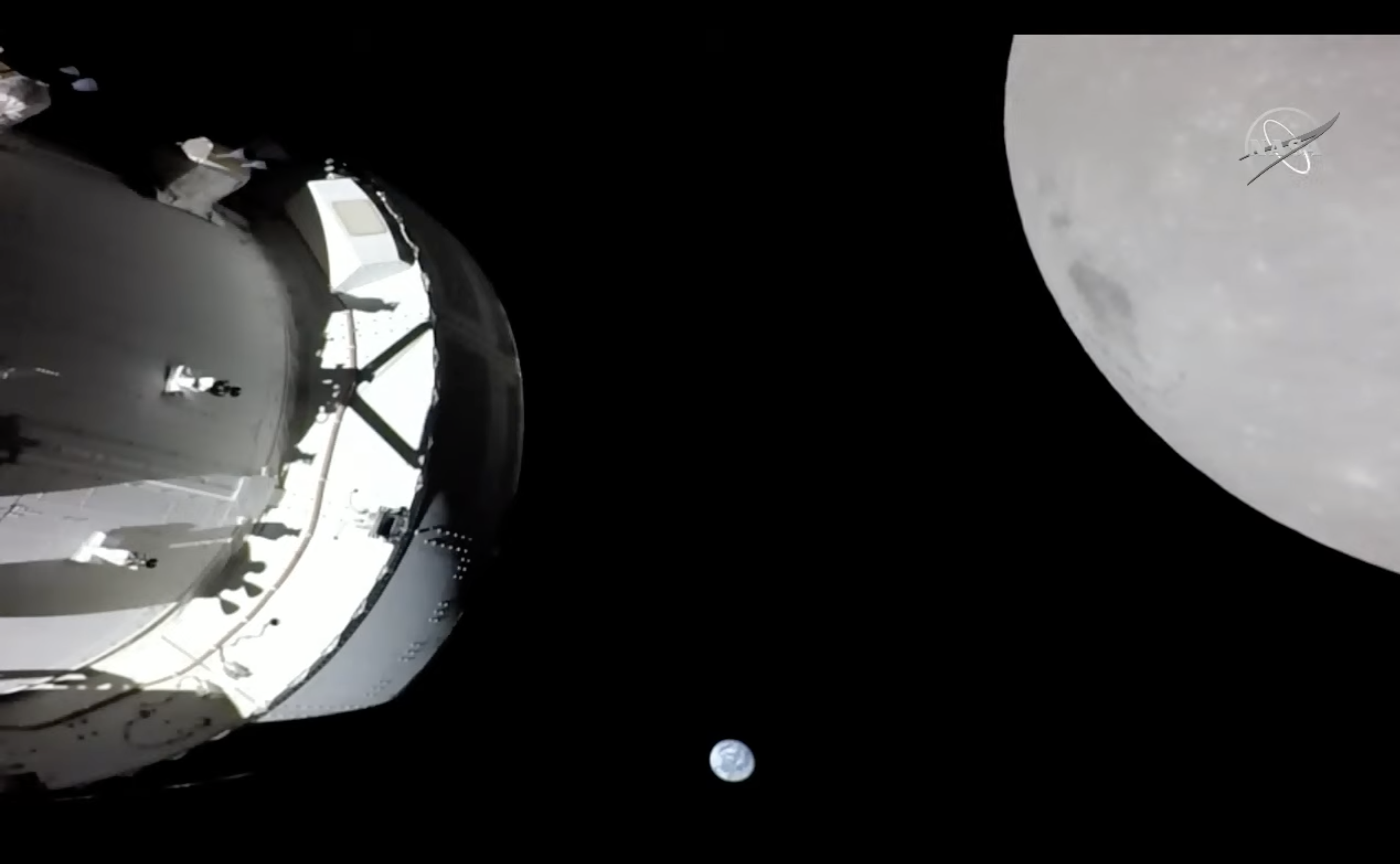
[ad_1]

NASA’s Artemis 1 mission fired its engines close to the moon today (Nov. 21), finishing the maneuver successfully out of communication with Earth.
Artemis 1’s uncrewed Orion spacecraft has been cruising toward the moon since Wednesday morning (Nov. 16), when it launched atop NASA’s gigantic Space Launch System (SLS) rocket.
The burn “sent Orion close enough to the lunar surface to leverage the moon’s gravitational force, and swing the spacecraft once around the moon toward entry into a distant retrograde orbit,” NASA’s Sandra Jones said during an Artemis 1 livestream Monday (Nov. 21) at 8:28 a.m. EST, nearly an hour after the burn took place.
NASA was in the dark, literally, during the burn Monday as Orion finished the burn by itself on the far side of the moon from our planet, where radio signals cannot penetrate from Earth. At its closest approach, the spacecraft skimmed just 80 miles (130 kilometers) or so above the lunar surface at 7:44 a.m. EST (1244 GMT).
The capsule took advantage of the close approach to its main engine in a “powered flyby burn,” which will set it on course to enter lunar orbit four days later.
Artemis 1 is the first mission of NASA’s Artemis program of lunar exploration, which aims to set up a crewed research base on the moon by the end of the 2020s, among other objectives. The Artemis 1 liftoff also marked the debut of the SLS, the most powerful rocket ever to launch successfully.
Monday’s successful burn will set up another crucial maneuver on Nov. 25: an engine firing designed to insert Orion into a distant retrograde orbit (DRO) around the moon. The capsule will stay in the DRO—a stable path that will take it as far as 40,000 miles (64,000 km) from the lunar surface—until Dec. 1, when another engine burn will send the capsule back toward Earth.
“This orbit is different than the orbit done during the Apollo program, in which the spacecraft and its crew orbited much closer to the lunar surface in a more circular fashion,” Jones said during the broadcast. “Distant retrograde orbit is important because it helps us to learn about how a spacecraft functions in a deep space environment.”
Orion will come home on Dec. 11, hitting Earth’s atmosphere at tremendous speeds before ultimately splashing down softly in the Pacific Ocean off the coast of California.
If all goes well with Artemis 1, NASA will be free to start gearing up for Artemis 2, which will send astronauts around the moon in 2024 or thereabouts.
In 2025, the agency plans to launch Artemis 3, which will put boots down near the lunar south pole, the site of the envisioned research base. Artemis 3 will be the first crewed lunar landing since the final Apollo mission in 1972, and the first ever to put a woman and a person of color down on the moon.
Copyright 2022 Space.com, a Future company. All rights reserved. This material may not be published, broadcast, rewritten or redistributed.
[ad_2]